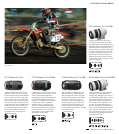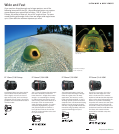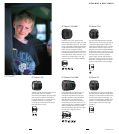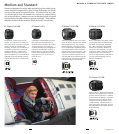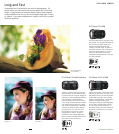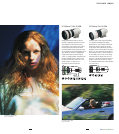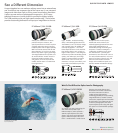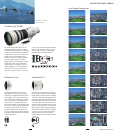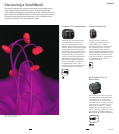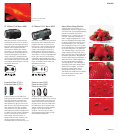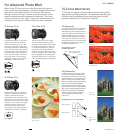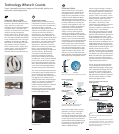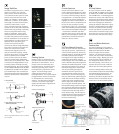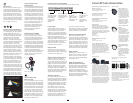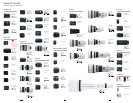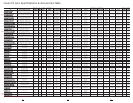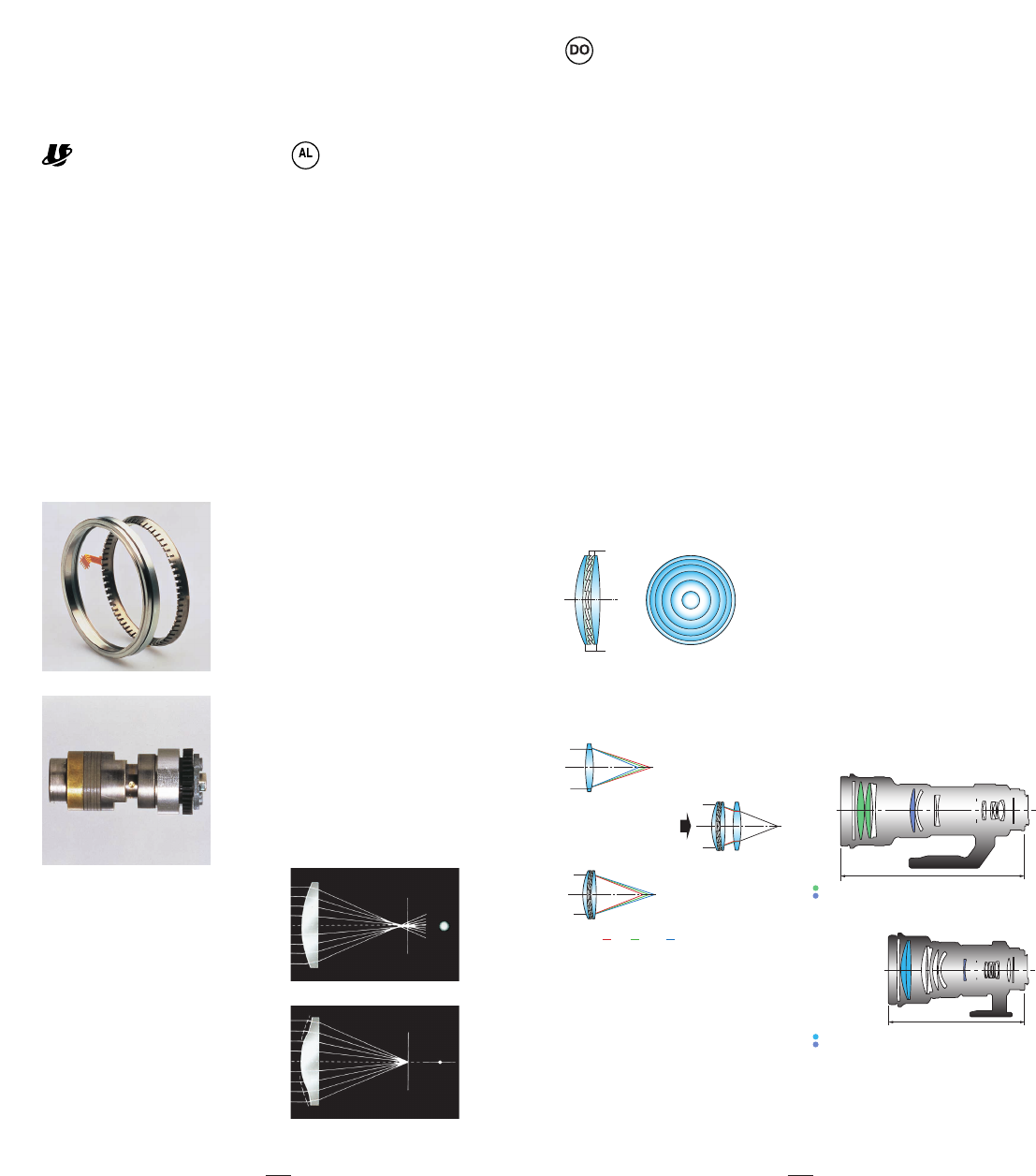
Aspherical Lenses
Ordinary spherical elementshave an
inherent flaw in thatthe point of focus
for the lens center does not match that
of the lens periphery. Spherical
aberrations of large-aperture lenses and
distortion by ultra-wide-angle lenses
cannot be resolved with spherical
elements alone. The Aspherical lens
element was therefore developed. The
curvature of the lens element is calculated
and shaped to achieve the ideal single
point of focus. The result ishigh contrast
with minimal flare even with a large-
aperture lens. Distortion can also be
effectively corrected in ultra-wide-angle
lenses. Canon started to develop
manufacturing technology for Aspherical
elements early on. We eventually
succeeded in establishing a mass-
production grinding and polishing
processwith a polishing precision of
5/10,000 mm. In 1971, Canon marketed
the FD 55mm f/1.2AL lens, the world’s
first large-aperture Asphericallens for
SLRs. Thiswas followed by many other
Canon lensesincorporating Aspherical
elements and they were well received.
Also, Canon developed mass-production
technology for glass-molded aspherical
elements and replicated Aspherical
lenses. The former was produced by an
ultra-high-precision aspherical lens-
molding machine which shaped the glass
directly. For the latter, the Aspherical
surface was formed by ultraviolet-
hardened resin film applied on a spherical
element. Canon hasdeveloped
numerous compact-size lenses, taking
full advantage of Asphericalelements
to attain high image quality.
Ultrasonic Motors (USM)
The Ultrasonic Motor (USM) in Canon
EF lenses isthe world’s first lens-based
motor. Based on a totally new
technology, the motor spins by ultrasonic
oscillation energy. The USM is quiet
and quick. It has made EFlenses almost
noiseless and autofocusing fast,
precise, and practical. The direct-drive
construction is very simple, with no gear
train. This makes it durable and efficient.
It also consumeslittle power. Two types
of USM are used: Ring-type USM and
Micro USM. The former type is found in
large-aperture and super telephoto
lenses, while the latter is used in more
compact lenses. Using the optimum
type of USM in the lensresults in
maximum efficiency and effectiveness.
35
Technology Where It Counts
Canon’s innovations put your images on film quickly, quietly, and
easily with outstanding results.
34
MRing-type USM
Micro USM
Spherical aberration ofspherical lens.
Convergence of parallel lightrays by
an Aspherical lens.
Diffractive Optics
Another world’s first in camera lens
optical design, Canon introduced new
technology in order to build a super
telephoto that complements itslatest
compact film and digital SLR cameras.
Thiscutting-edge technology employs
diffractive optical elementsthat use the
principle of diffraction to change the
direction of the lightwave’s path. This
revolutionary element has Aspherical
characteristics, which help define
superior maximum aperture image
quality, as well as optical qualities
superior to UD-glassto totally correct
color fringing. The Multi-Layer Diffractive
Optical Elements exhibit outstanding
ability to correct chromatic aberrations
(color defects), and are especially effective
in super telephoto lens design where
these specific types of optical defects
are most likelyto happen. You can see
how well the technology works in your
own pictures byexamining the straight
edges of a subjectin your picture. You
will see a crisp, clear edge without
the
telltale, prismatic color fringing that is visible
with imagesshot using inferior optics.
Glasslens elements refract, or bend
lightwaves, as they pass through to
form an image. That’s simply the
naturallyoccurring physicsof light. We
use multiple elements and special glass
to help keep the waves focused like a
pinpoint instead of spreading them into
the rainbow of color seen when light
passes through a glassprism. To
diffract a lightwave means
that the raygoes through a change in
direction before passing through the lens.
The change in direction is caused by a
diffraction grating—very fine parallel
grooves or slits on the surface. Canon
found that using a concentric diffraction
grating that getssmaller toward the
edges—some asfine as tenths of a
micrometer—solved many of one
inherent physical limitations of camera
optics. The design also makesit
possible to obtain the same effect as an
Aspherical lens. And taking the
technology a step beyond, we actually
use two single-layer diffractive optical
elements whose diffraction gratingsare
bonded together face-to-face. Since
longer wavelengths form an image closer
to the lens due to the large diffractive
angle, and shorter wavelengths form an
image farther from the lens due to the
smaller diffractive angle, putting the DO
elements with conventional glassoptics
actually cancels outeach other’s
chromatic aberrations and isexceptionally
effective in correcting this optical defect.
The diffraction that occurs with Canon’s
Multi-Layer Diffractive optical elements
actually corrects the optical system’s
chromatic aberrations and improves the
image formation performance.
The net resultof Canon’sDO technology
is a lens design with reduced size and
weight while offering higher image quality
than a comparable focal length lens that
incorporates conventional glass optical
elements. It means a new generation of
high-performance lenses thatcomplement
the more compactdesigns of our latest
SLR film and digital cameras.
Refractive Optical Element
Chromatic aberration
canceled out
Refractive Optical
Element and Multi-
Layer Diffractive
Optical Element
Combined
Chromatic aberrations
reversed from
that of a
refractive optical element
Image formation in the red, green,
and blue wavelength order
Red
Green Blue
Multi-Layer Diffractive
Optical Element
Image formation in
the blue, green, and
red wavelength order
Chromatic aberrations
Diffractive
grating
Glass
lenses
Cross section Front view
Correction of Chromatic Aberration bythe
Multi-Layer Diffractive OpticalElement
Multi-Layer Diffractive OpticalElement Construction
400mm f/4 Lens Designed with a Refractive
Optical Element Only
400mm f/4 DO IS USM
(Incorporates Multi-Layer Diffractive Optical Element)
UD element
317mm Weight: 3,000g
Fluorite
Multi-layer diffractive optical element
232.7mm Weight: 2,080g
(Including removable
tri
p
od collar)
Fluorite
Lens Downsizing with the Multi-Layer Diffractive
Optical Element
Note: If a very bright spotlightlike a mercury lamp
is photographed with a DO lens, a ring of light may
occasionally appear around the light source, due to
the imaging characteristicsofthe Multi-Layer
Diffractive Optical Element.



